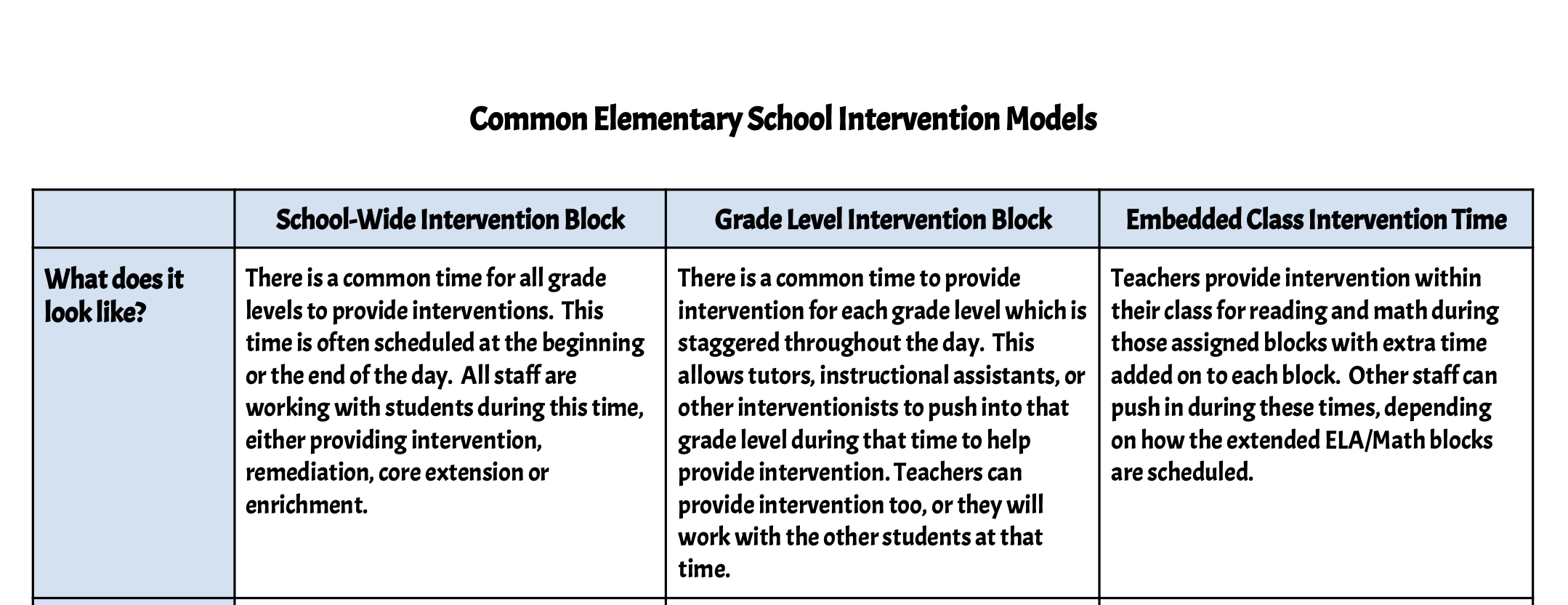Remediation vs Intervention
In schools, remediation and intervention address different aspects of student support but they are often used incorrectly, especially in high schools. Read on to find out more about the differences and misconceptions.
What is Remediation?
Remediation is a targeted approach that re-teaches content or skills that students did not master the first time. Instead of focusing on foundational skills from earlier grades, remediation aims to bring students up to proficiency with specific, grade-level content. In a high school context, this means reviewing concepts or assignments from a particular class or subject that a student struggled with, often due to missed instruction or limited understanding.
For example, if a student didn’t pass a geometry test, a remediation plan might focus on revisiting those particular geometry concepts to help the student pass the course. Remediation is often delivered in the form of re-teaching units, extra assignments, or personalized tutoring on the specific areas that students struggled with in class.
Characteristics of Remediation in High Schools
Focus on grade-level content: Remediation involves reteaching current-grade concepts, not foundational skills from previous grades.
Addresses gaps in recent learning: Remediation targets specific, missed content from the student’s current curriculum.
Aims to bring students to grade-level performance: The primary goal is helping students catch up to the standards required to succeed in their current courses.
What is Intervention?
Intervention, on the other hand, is a proactive and broad approach aimed at helping students who may be at risk of falling behind academically or behaviorally. Interventions address foundational issues early on to prevent them from becoming major obstacles. Unlike remediation, interventions can focus on skills and strategies that support broader academic or behavioral success.
Intervention might include additional support sessions, frequent progress monitoring, behavioral support plans, or skill-building in areas like organization, reading fluency, or math automaticity. These interventions might address skills outside of the immediate content area—such as general study habits or behavioral modifications.
Characteristics of Intervention in High Schools
Preventive and proactive: Intervention provides support as soon as students show signs of struggle.
Broader in scope: Interventions can focus on various skills, including general academic strategies, behavior, and social-emotional learning.
Flexible and ongoing: Intervention plans can be adjusted based on the student's response and may continue for a longer period than remediation.
Key Differences Between Remediation and Intervention
Remediation
Goal: Help students pass current-grade content
When Used: After students struggle with specific content
Focus: Grade-level re-teaching
Approach: Re-teaches missed grade-level content
Target Students: Students who did not master current content
Intervention
Goal: Address early signs of struggle
When Used: When data decision rules indicate a need for support
Focus: Proactive support, skill-building, and preventive care
Approach: Builds general academic or behavioral skills
Target Students: Students at risk of falling behind
Using Remediation and Intervention in High Schools
Scheduling remediation and intervention in high schools requires balancing structured support with students’ regular academic schedules. Remediation is often best scheduled during study halls, flex periods, or after school, allowing students to re-learn specific content without missing other classes. By dedicating certain study hall periods or offering subject-specific after-school sessions, schools can help students close immediate academic gaps effectively.
Intervention, on the other hand, is more flexible and proactive, focusing on skills that help prevent academic or behavioral struggles from escalating. Schools often schedule intervention during advisory periods, lunch breaks, or as part of weekly check-ins with support staff, providing consistent support without interrupting core class time. Both approaches, when scheduled thoughtfully, allow students to build confidence and skills while keeping up with their coursework.
Final Thoughts
Remediation and intervention are powerful tools in supporting students, but they serve distinct purposes. Sometimes school leaders use these two terms interchangeably, but they have distinct differences. Remediation ensures that students meet current course standards, while intervention works to prevent larger issues by addressing foundational skills and behaviors. When applied correctly, both strategies help students build confidence and move forward towards success.


